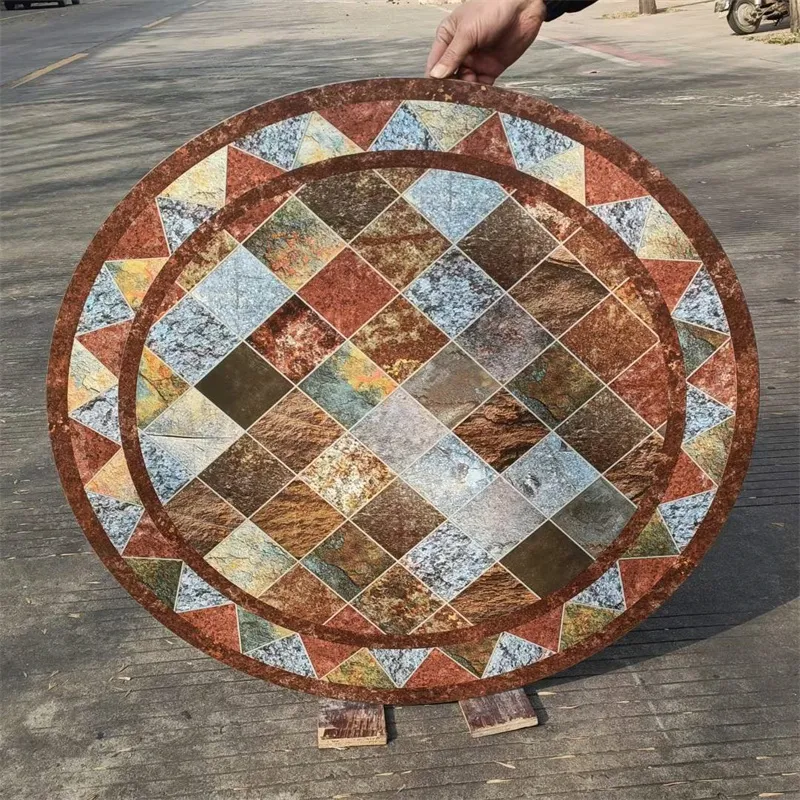Dec . 04, 2024 09:27 Back to list
Overview of Float Glass Production Techniques and Methods
The Float Glass Manufacturing Process
Float glass, a type of glass widely used in windows, mirrors, and various architectural applications, is renowned for its clarity and smoothness. The manufacturing process of float glass involves a series of refined steps that transform raw materials into finished products with remarkable properties. This article explores the intricacies of the float glass manufacturing process, highlighting its components, techniques, and technological advancements.
Raw Materials
The journey of float glass manufacturing begins with the selection of high-quality raw materials. The primary ingredients include silica sand, soda ash, and limestone, which are mixed in precise proportions. Additional materials such as alumina, boron oxide, and various metal oxides may be incorporated to achieve specific properties such as durability, color, and UV resistance. Properly sourced and processed raw materials are crucial in ensuring the final product's quality.
Melting
The mixed batch is then transported to a furnace where the melting process takes place. The furnace operates at extremely high temperatures, typically around 1,600 to 1,700 degrees Celsius (2,912 to 3,092 degrees Fahrenheit). In this environment, the raw materials seamlessly blend and melt into a molten glass. The melting process is generally conducted using one of two types of kilns regenerator or recuperator furnaces, with energy efficiency being a vital consideration in modern glass manufacturing. Regenerative furnaces, for instance, can significantly reduce energy consumption while maintaining high production output.
Float Bath
Once the glass has melted, it is poured onto a bath of molten tin, known as the float bath. This is where the magic of the “float” glass process happens. The molten glass is introduced into the float bath, where it spreads out evenly, forming a flat, thin layer. The tin provides a smooth surface, contributing to the glass's uniform thickness and optical clarity. The combination of temperature control and material properties allows the glass to form a perfectly flat surface as it cools.
Maintaining the correct temperature in the float bath is critical. The molten glass must remain fluid enough to spread adequately while still maintaining a consistent thickness as it flows over the tin. During this phase, the glass is also subjected to specific atmospheric conditions, ensuring that it does not become contaminated.
float glass manufacturing process

Annealing
After the float bath, the glass moves to an annealing lehr. This is a specialized furnace where the glass is slowly cooled to relieve internal stresses. Temperature consistency is paramount during annealing, as any sudden cooling can lead to defects or shattering. The annealing process generally lasts several hours and is crucial for ensuring the strength and durability of the glass.
Cutting and Fabrication
Once annealed, the glass sheets are cut to the desired dimensions. Cutting can be done using various methods, ranging from manual scoring to automated diamond-blade techniques. The precision at this stage affects the overall quality and usability of the float glass. After cutting, the edges are often ground and polished for safety and aesthetic appeal.
Post-production, float glass may also undergo further processing, such as tempering, lamination, or coating, depending on its intended use. These processes enhance the glass’s properties, improving strength, safety, and thermal performance.
Environmental Considerations
The float glass manufacturing process is energy-intensive, prompting manufacturers to adopt more sustainable practices. Innovations in furnace technology and recycling of cullet (recycled glass) significantly improve the ecological footprint of glass production. By incorporating cullet into the raw materials, manufacturers can reduce the amount of energy needed to melt the glass and lower CO2 emissions.
Conclusion
The float glass manufacturing process is a sophisticated interplay of chemistry, engineering, and technology. From sourcing superior raw materials to the final cooling and cutting processes, every phase plays a critical role in creating high-quality glass that meets market demands. As challenges such as energy consumption and environmental impact come to the forefront, the industry continues to innovate, ensuring that float glass remains a vital component of modern architecture and design. Understanding this process not only underscores the complexity of glass production but also highlights the importance of continuous improvement in manufacturing technologies.
-
Safety and Style with Premium Laminated Glass Solutions
NewsJun.24,2025
-
Reinvents Security with Premium Wired Glass
NewsJun.24,2025
-
Premium Float Glass Line for Modern Architecture
NewsJun.24,2025
-
Low Emissivity Glass for Energy-Efficient Architecture
NewsJun.24,2025
-
High-Performance Insulated Glass Solutions for Modern Architecture
NewsJun.24,2025
-
Elevates Interior Style with Premium Silver Mirror
NewsJun.24,2025
Related PRODUCTS














